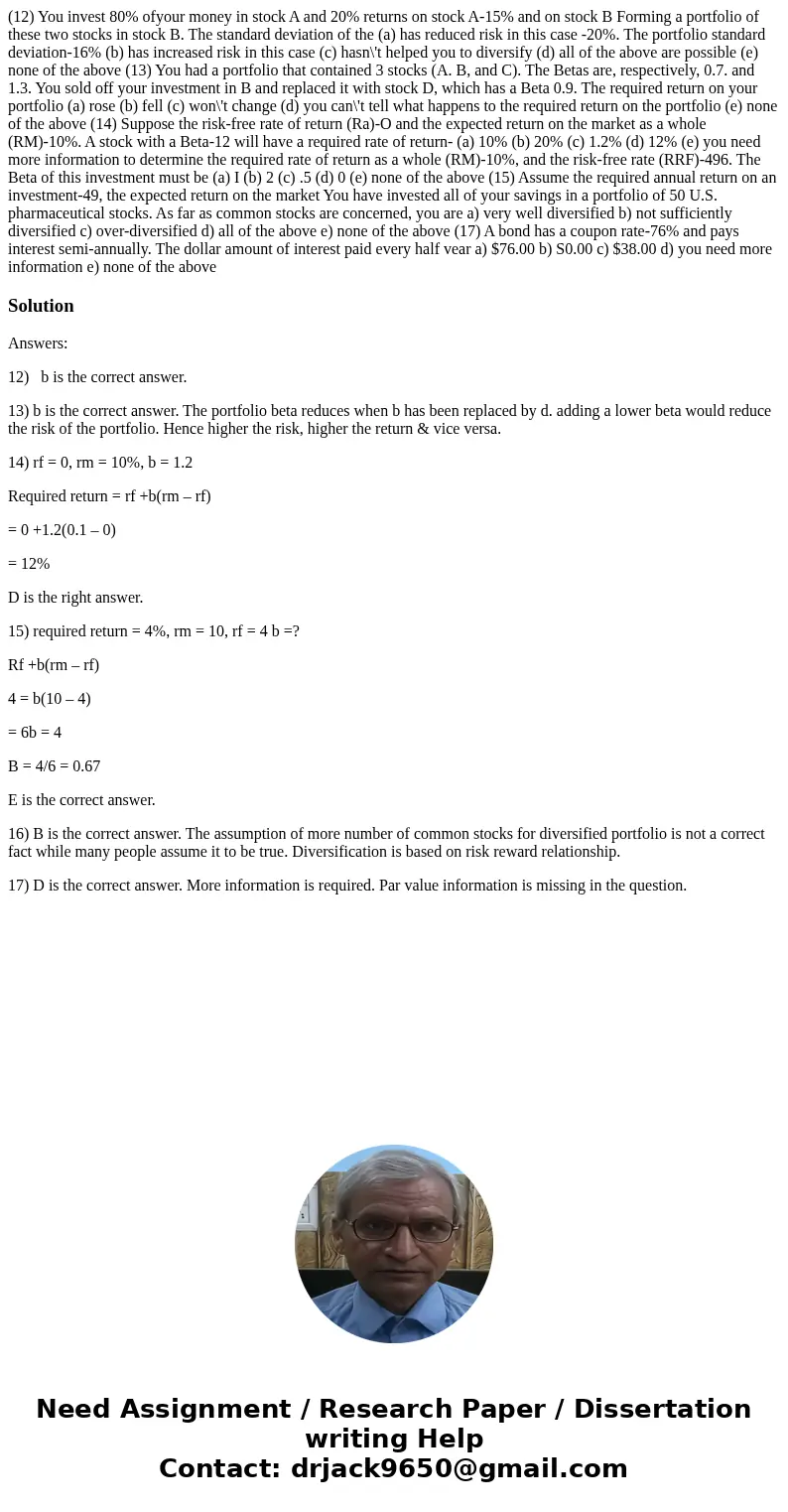(12) You invest 80% ofyour money in stock A and 20% returns on stock A-15% and on stock B Forming a portfolio of these two stocks in stock B. The standard deviation of the (a) has reduced risk in this case -20%. The portfolio standard deviation-16% (b) has increased risk in this case (c) hasn\'t helped you to diversify (d) all of the above are possible (e) none of the above (13) You had a portfolio that contained 3 stocks (A. B, and C). The Betas are, respectively, 0.7. and 1.3. You sold off your investment in B and replaced it with stock D, which has a Beta 0.9. The required return on your portfolio (a) rose (b) fell (c) won\'t change (d) you can\'t tell what happens to the required return on the portfolio (e) none of the above (14) Suppose the risk-free rate of return (Ra)-O and the expected return on the market as a whole (RM)-10%. A stock with a Beta-12 will have a required rate of return- (a) 10% (b) 20% (c) 1.2% (d) 12% (e) you need more information to determine the required rate of return as a whole (RM)-10%, and the risk-free rate (RRF)-496. The Beta of this investment must be (a) I (b) 2 (c) .5 (d) 0 (e) none of the above (15) Assume the required annual return on an investment-49, the expected return on the market You have invested all of your savings in a portfolio of 50 U.S. pharmaceutical stocks. As far as common stocks are concerned, you are a) very well diversified b) not sufficiently diversified c) over-diversified d) all of the above e) none of the above (17) A bond has a coupon rate-76% and pays interest semi-annually. The dollar amount of interest paid every half vear a) $76.00 b) S0.00 c) $38.00 d) you need more information e) none of the above
Answers:
12) b is the correct answer.
13) b is the correct answer. The portfolio beta reduces when b has been replaced by d. adding a lower beta would reduce the risk of the portfolio. Hence higher the risk, higher the return & vice versa.
14) rf = 0, rm = 10%, b = 1.2
Required return = rf +b(rm – rf)
= 0 +1.2(0.1 – 0)
= 12%
D is the right answer.
15) required return = 4%, rm = 10, rf = 4 b =?
Rf +b(rm – rf)
4 = b(10 – 4)
= 6b = 4
B = 4/6 = 0.67
E is the correct answer.
16) B is the correct answer. The assumption of more number of common stocks for diversified portfolio is not a correct fact while many people assume it to be true. Diversification is based on risk reward relationship.
17) D is the correct answer. More information is required. Par value information is missing in the question.

 Homework Sourse
Homework Sourse